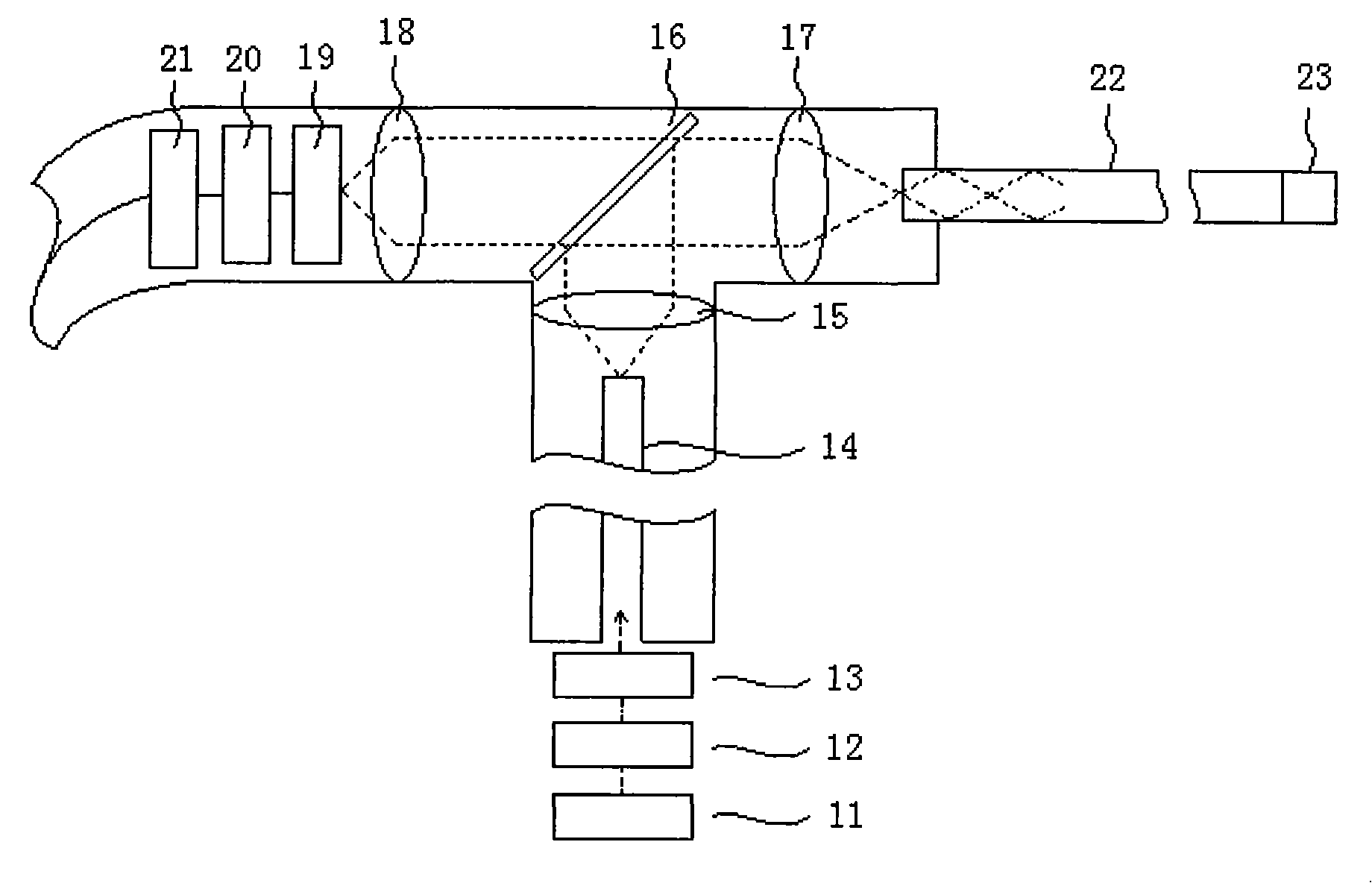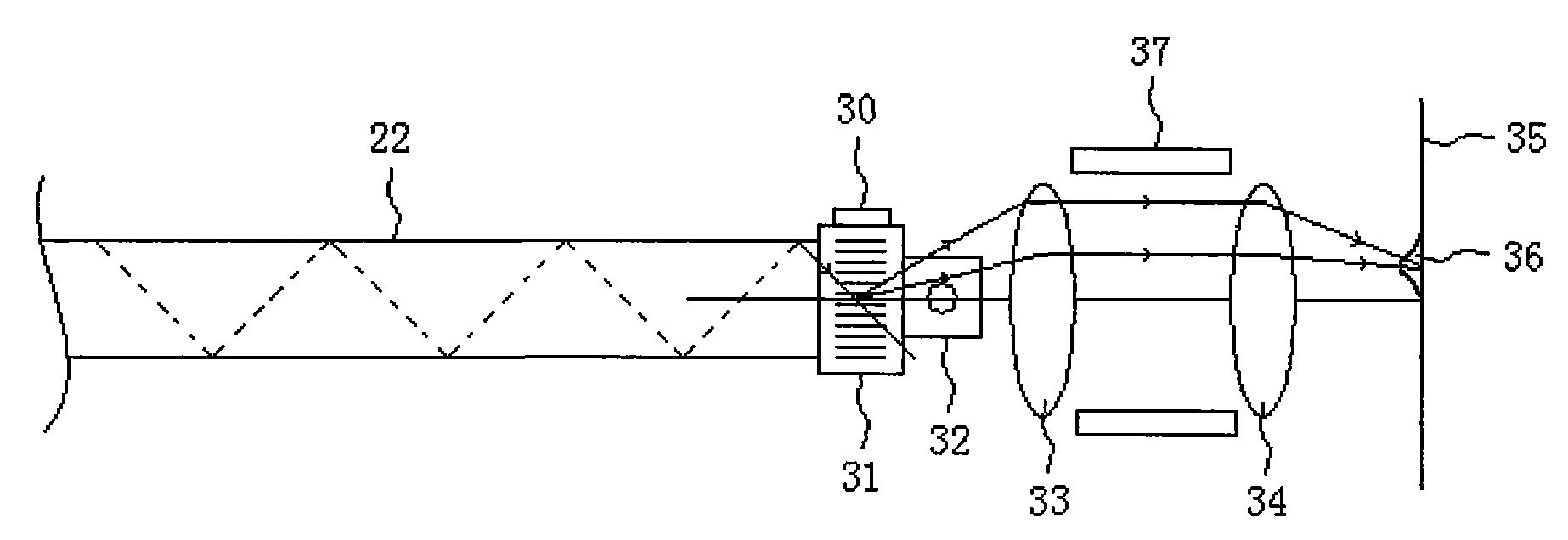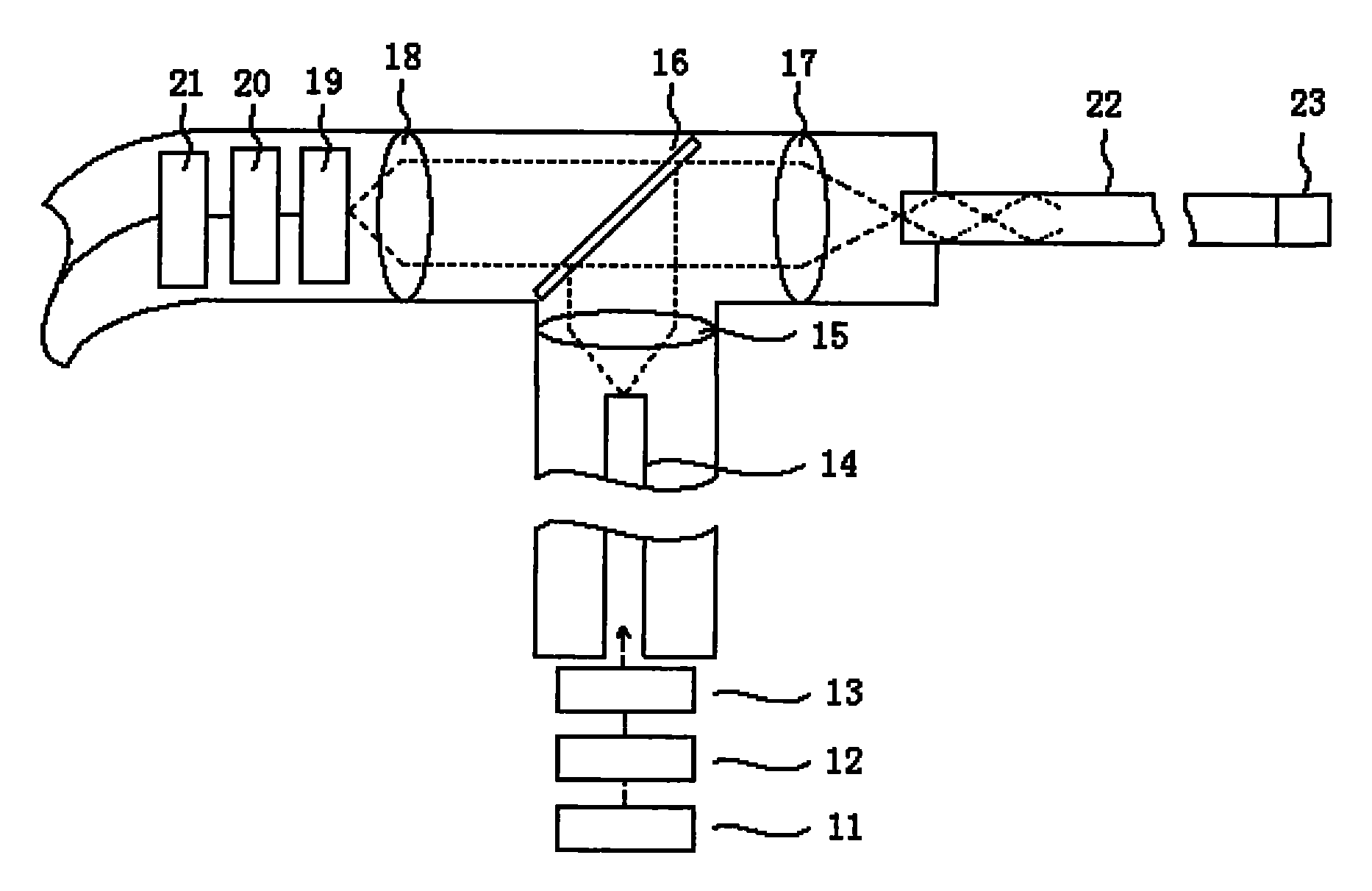Single-optical fiber multiphoton fluorescence scanning endoscope
A multi-photon, endoscope technology, applied in the field of optical systems, can solve the problems of mechanical inertia, image motion blur, unfavorable scanning speed, etc., and achieve the effect of simple driving, convenient use, and overcoming mechanical inertia.
- Summary
- Abstract
- Description
- Claims
- Application Information
AI Technical Summary
Problems solved by technology
Method used
Image
Examples
Embodiment Construction
[0022] Such as figure 1 The system optical path diagram of the shown single-fiber multiphoton fluorescence scanning endoscope, the present invention adopts titanium sapphire laser 11 as the excitation light source, the output center wavelength is 800nm, the laser of bandwidth 10nm; Through electro-optic modulator 12, produce ultrashort pulse laser; Since the laser beam passes through the acousto-optic deflector to generate temporal and spatial dispersion, a dispersion compensation unit 13 is installed at the incident end of the laser; the generated excitation laser passes through a single single-mode optical fiber 14, a lens 15, is reflected by a beam splitter 16, and passes through After the lens 17 is focused, it is coupled into a single single-mode optical fiber 22, which is carried in the endoscope duct and enters the body. The front end of the single-mode optical fiber 22 is an acousto-optic deflection scanning front end 23 .
[0023] Such as figure 2 The structure dia...
PUM
 Login to View More
Login to View More Abstract
Description
Claims
Application Information
 Login to View More
Login to View More - R&D
- Intellectual Property
- Life Sciences
- Materials
- Tech Scout
- Unparalleled Data Quality
- Higher Quality Content
- 60% Fewer Hallucinations
Browse by: Latest US Patents, China's latest patents, Technical Efficacy Thesaurus, Application Domain, Technology Topic, Popular Technical Reports.
© 2025 PatSnap. All rights reserved.Legal|Privacy policy|Modern Slavery Act Transparency Statement|Sitemap|About US| Contact US: help@patsnap.com



